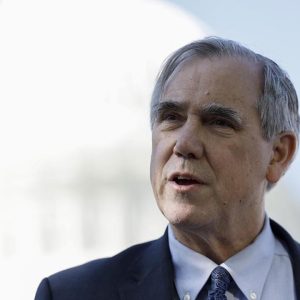 View Winners →
View Winners → 
Inflation in the Riverside metropolitan area did not change measurably over the last two months, but was up more than 4% in the last year, according to a report released Tuesday by the U.S. Bureau of Labor Statistics.
The agency’s bimonthly report, which covers northwestern Riverside County, as well as the cities of Ontario and San Bernardino, indicated that the metro area’s Consumer Price Index was “unchanged” from the beginning of October to the end of November.
The report found that while electricity costs were up 7.2%, and natural gas prices rose 1.2%, other categories declined, offsetting the increases. The overall energy index dropped 6% as a result of a drop in prices at the gas pump.
Food prices showed a nominal decrease of 0.3% during the two-month period, “influenced by lower prices for meats, poultry, fish and eggs, and fruits and vegetables,” according to the BLS.
Shelter costs, or property rents, were 1.3% higher, while apparel costs and general household “operations” costs were down 5.3% and 2.3%, respectively, the report said.
On an annualized basis, the CPI was up 4.3% in the metro area, according to the BLS.
The index showed that the broad category of “goods and services” accounted for the largest year-to-year increase at 11%, followed by rents, which shot up 8.8% in the metro area.
Meanwhile, gasoline prices were down 5.7% year-over-year, and used vehicle prices were down 3.5%, while education costs were lower by 3.3%, the BLS said. For the year, however, food prices were 3.8% higher, and electricity prices surged 11.9%.
The report showed pocketbook pressure was up 3.1% nationwide from November 2022 to November 2023.
The current rate of inflation reflects the elevated price trajectory impacting most sectors of the economy. The Riverside metro area hasn’t recorded a comparable inflationary pattern since the local CPI was first published in 2018.
The accelerating consumer price hikes have been blamed by the Biden administration on the war in Ukraine and consequent energy supply disruptions, but critics have pointed to the administration’s restrictive domestic energy policies, as well as excessive spending, including the flood of dollars contained in relief packages, as root causes.
The national debt is just under $34 trillion, after passing the $33 trillion mark less than three months ago, according to the U.S. Treasury Department.
The Federal Reserve’s Open Market Committee started gradually increasing its benchmark, or target, lending rate in the spring of 2022, though the FOMC has suspended hikes since October, leaving the rate at roughly 5.25%.
The hikes were an attempt to soak up excess liquidity and slow spending. No additional hikes appear to be on the immediate horizon, according to business forecasters.










































































































